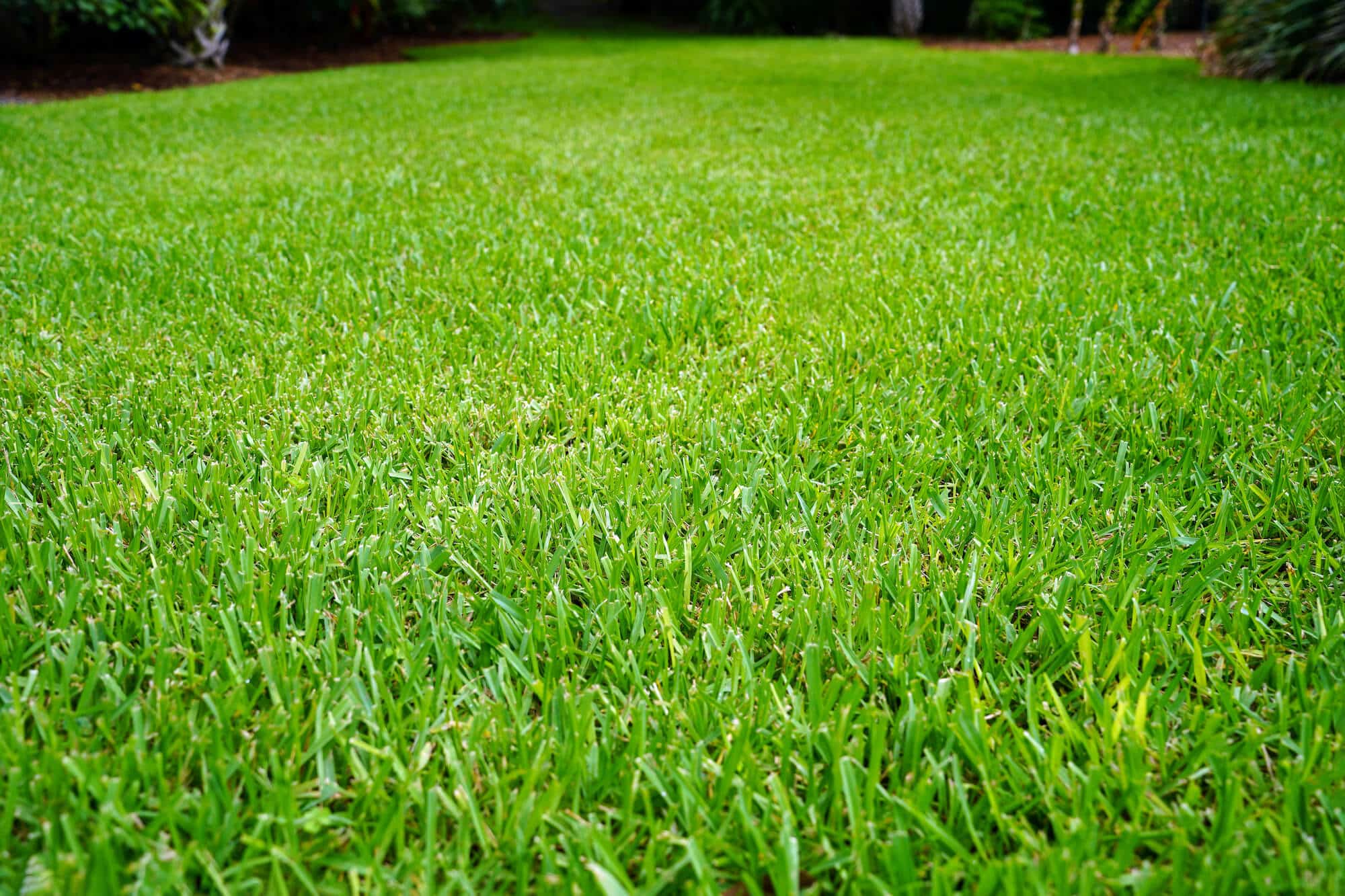Zoysia Grass
Choosing the right lawn for you is about more than just picking one that looks pretty. It’s important to educate yourself on what’s out there to determine the type that’s best suited for your schedule, climate, and overall environment.
Here’s all you need to know about Zoysia Grass to help you figure out if it’s right for you.

Some Facts About Zoysia
Zoysia Grass was named in honor of 18th century botanist Karl von Zois.
This grass can be found in Southern California, along the Gulf Coast from Florida to Texas, and along the Atlantic coast from Florida to Connecticut.
In warmer climates, it can tolerate shade. In cooler temperatures however, it doesn’t handle shade well.
In general, it is a perennial that is sod-forming. It also happens to have both rhizomes as well as stolons. While it does brown up as soon as the first freeze occurs, its also known for being the first to turn back to green when spring finally arrives.
Zoysia grasses grow from the beginning of spring and into the later part of autumn; of course, only if the requirements for nutrition and moisture are met. This type of grass is tolerant during drought, but it will turn brown until proper watering returns.
Characteristics & Traits
In general, Zoysia sod is a thick grass that provides carpet-like coverage for any lawn or athletic field. Its leaf blades are quite stiff and smooth. Near the base, you’ll find hairs. The leaves are rolled up within the bud shoot.
It can adapt to a variety of soil conditions including soil conditions that are sandy, clay-filled, acidic, and alkaline. It is very salt tolerant, much like Bermuda Grass, which is why it thrives along sandy beaches as long as there is sufficient drainage.
This type of grass holds up fairly well to foot traffic and is a great choice for fields for low impact sports like golf and baseball.
It does not always recover as well from concentrated heavy traffic that occurs in sports like soccer and football. The constant running back and forth in the same location can take its toll on Zoysia Grass.
Zoysia sod does very well in drought conditions. In this scenario, it will take on a straw coloring, but it recovers quickly when irrigation returns. The leaf blades may also turn under during a drought.
Its deep root system gives it the ability to extract moisture from much deeper locations than many other types of grasses.
Where Did It Come From & What Are The Varieties?
This warm season grass is native to places like Japan, China, and other areas within Southeast Asia. It was first introduced into the U.S. in 1911 from Manila. It was brought over by USDA botanist C.V. Piper. Piper admired the grass of the seashores in the Philippine Islands.
He also noticed that, when cut closely, it made for a beautiful lawn. Piper felt it was ideal for both the Gulf Coast and Atlantic coast of Florida. However, the less popular Zoysia Japonica was actually introduced to the States more than 15 years prior, in 1895. It was brought in from the Manchurian Province of China.
There are three main varieties of Zoysia Grass, and they vary by aggressiveness, texture, and cold tolerance:
Zoysia Matrella
This is the most common of the three and is best as a tropical or subtropical grass choice. It can be grown all the way up to Connecticut, but only in situations with less shade. In warm areas, it can remain green all year round. However, in cooler climates, it will brown come late fall to winter.
Zoysia Japonica Sometimes nicknamed “Korean lawn grass” or “Japanese lawn grass,” this variety is the best with cold tolerance and can be used as far north as Connecticut as well. This is the only one of the three that can be established through seeds.
Zoysi Tenuifolia
The least cold tolerant of the three Zoysia grasses, this one originated from the Mascarene Islands. It is most commonly found in Southern California, where it is used mostly for low growth ground coverage. It is sometimes called “Mascarene grass” or “Korean velvet grass.”
Advantages & Disadvantages
As with any type of grass, there are bound to be some pros and cons. Much of how you view them also depends on your own individual situation.
Use this list of quick advantages and disadvantages to find out if Zoysia sod is a realistic choice for your lawn:
Advantages
- The first to turn green in the spring
- This is a highly adaptable type of grass, so it does well in a variety of soils
- It is ideal for yards, parks, and some athletic fields
- Handles drought conditions well
- High tolerance for salt
- Few issues with pests
Disadvantages
- Browns following the first hard freeze
- Maintaining proper drainage is key to keeping this type of grass looking its best
- It has a slower growth rate, which also means recovery from damage like lots of foot traffic is slower.
search
Establishment & Maintenance
Zoysia Japonica is the only one of the three that can be established from seeds, but otherwise Zoysia Grass can be established from sprigs, plugs, or sod.
Because this type of grass has such a slow growth rate, it is important to properly prepare the seedbed ahead of time.
The seedbed needs to be finely pulverized and should be firm and smooth and free from weeds before planting. You have the option to either tear apart or shred the sod. It can also be cut into two-inch plugs for planting.
The sprigs should be placed two inches apart in rows that are spaced six inches apart. When planting in rows, do not cover with soil completely. At least one node needs to be higher than soil level. For sprigs that are on the surface, they need to be rolled to make sure there is proper soil contact.
Moisture and fertilizer over the first several weeks is crucial to the success of the planting. You will need to keep the soil moist during the establishment period, and this is most important with sprigging.
Keep in mind that sprigging is the most economical method to use for establishing Zoysia Grass. This also usually offers a faster rate of coverage than plugging.
Watering, Mowing & Pest Management
ZOYSIA USUALLY BROWNS DURING DROUGHTS, but it will regain its lush look once rain or irrigation help reestablish health. You should water the grass two to three times a week based on temperatures and soil conditions to revive your lawn.
Know that the more sandy the soil and the hotter the temperatures, the more irrigation may be required. In warm climates, it is also a good idea to water occasionally even during winter months.
For a dense turf, nitrogen fertilizer is recommended. However, too much nitrogen can increase thatch development. If you mow more frequently, you will get a finer turf. This is good for use on golf courses, where you would need to mow as frequently as three to five days a week. For residential lawns, you don’t need to mow nearly as much.
You may also need to mow Zoysia Grass higher in cases where there is more shade. Mowing more frequently can help to prevent layers of thatch from building up and becoming a problem. If thatch is left to build up, it can prevent the grass from absorbing the water and nutrients it needs.
The good news is that there are few serious problems that impact Zoysia Grass. Leaf spot diseases, brown patch, and rust are the main concerns to watch for. However, with proper lawn care and maintenance, you should be able to prevent or treat anything that arises.
If you’re looking for an adaptable grass that provides thick, carpet-like coverage, then Zoysia could be just what you need.







